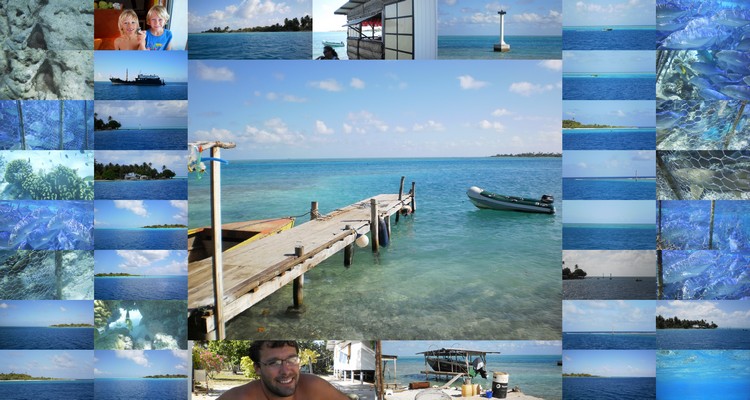


Peering over the side I could see everything just as clearly as if I was in the water. I rowed out into the lagoon, and then drifted back to the boat over the coral, only a few inches below the bottom of the dinghy. I took the dinghy to the nearby beach, but as soon as I’d set foot on the shore the no-nos started biting viciously. No wonder this is regarded as one of the world’s top spots for seeing reef fish.īack on board we sat through another super-heavy rainstorm, and then explored the bay for a while. The tide was on the way in, bringing pure, clear Pacific ocean in – so the visibility was stunning. Later in the morning when we’d found our way onto a mooring ball, we hopped over the side to the most amazing snorkeling yet. So I sent for the shower gel and enjoyed a fresh water shower. I made an approach to the inlet, but the rain was so hard we couldn’t see more than a few tens of metres, not great conditions for slotting a yacht through a narrow gap in the reef between rolling breakers. Dawn off ToauĪ spectacular dawn was soon followed by gusty winds and strong rain. Lots of wind meant we just had the genoa up, and were still making well over 6 knots, so we arrived off Anse Amyot before midnight and had to stall for hours, sailing back and forth. It’s only 40 miles from Fakarava, but leaving through the pass on a good tide meant we had to sail overnight to arrive in the light. On the northern coast of the atoll there’s a small inlet, a half-pass that doesn’t go all the way through into the lagoon, called Anse Amyot that I’d read good things about.
#Anse amiot toau full#
In several places, particularly south of the entrance channel, wide channels cut into the reef wall at around 30-40 feet deep, with caves and grottos along each side all full of sea life.After another day in Fakarava, we left through the north pass for a short overnight sail to Toau. On it was one of the largest anemones we’ve seen thus far at about three feet across, with a 5-6″ anenomefish. In the photos below, we’re diving a shoulder at around 140 feet. And the wall wasn’t as regular as most of the other atolls we’d dove: canyons cut into the wall and shoulders extended off. The reef walls here were parcticularly steep, almost undercutting in some places. At bottom left is a Crown-Of-Thorns Sea Star, and at right is a Blue Sea Star.īesides the excellent visibility and interesting sea life, another aspect of diving at Anse Amyot that really appealed to us was the underwater seascape. The ones we’ve seen so far have been smaller, and solitary.Īnd we saw two Sea Star types that we’d not seen before on this trip. And we saw many 8-10″ Emporor Angelfish, swimming relatively close together. These particular Lionfish typically are solitary, so it was unusual to see three together. We’d not seen one before, and saw a couple at Anse Amyot.īelow left are three Clearfin Lionfish. On the right is an uncommon Golden variation of the Trumpetfish. We’ve not seen many turtles since leaving Palmyra–the one below left swam so fast straight at Jennifer she nearly had to move out of its way.

We had several sealife sightings that were rare for us. In the photo on the left below, we’re more than 100 feet deep and can still see the dinghy directly above Jennifer just off the top of the wall, anchored in twenty feet. The visibility in the Tuamotus is exceptionally good, and Anse Amyot was a standout for the area. We did four dives one day and two the next, for a total of over six hours underwater in two days. While the diving in the South Pacific is world-renowned, if the diving in the Tuamotus is not the best, we have an unbelievable trip ahead of us.ĭiving isn’t the focus of this trip, but it was so good at Anse Amyot on Toau that we didn’t do much else. We’ve spent two weeks here now, diving at four different atolls: Raroia, Tahanea, Fakarava and Toau.

The islands are known for amazing diving with excellent visibility and abundant fish, creature and coral life. The Tuamotus Archipelago consists of seventy-eight islands, and all but two are coral atolls.


 0 kommentar(er)
0 kommentar(er)
